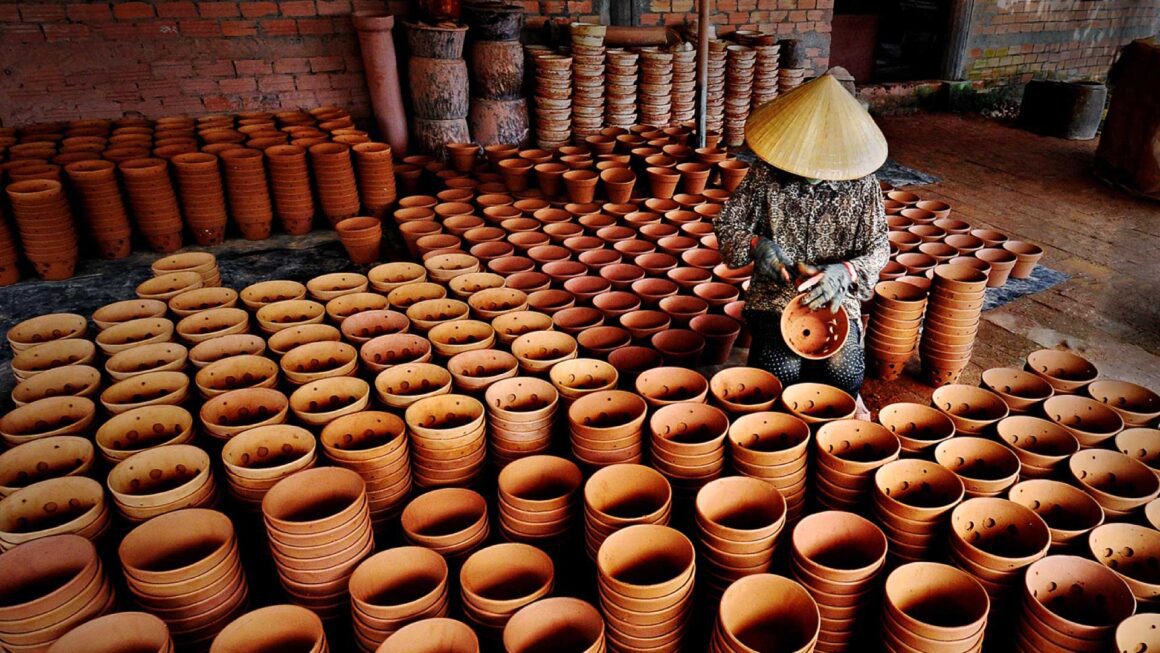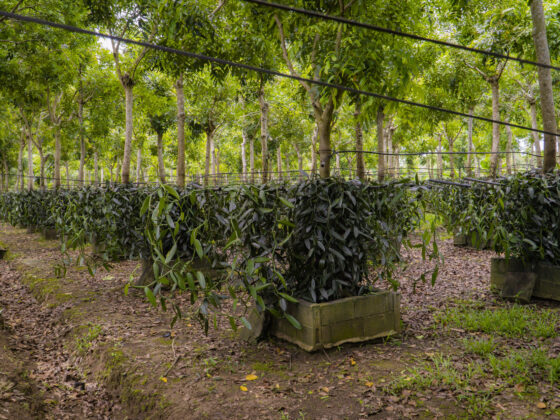Table of Contents Show
✍️ AI is summarizing:
Vietnamese pottery is a beautiful reflection of the country’s rich cultural heritage, showcasing craftsmanship that has been honed over centuries. With a history that dates back to ancient times, pottery has evolved into a vibrant art form, deeply intertwined with the daily lives of the Vietnamese people.
Famous pottery villages like Bat Trang serve as living museums, where traditional techniques and artistry are passed down through generations, creating pieces of Vietnamese pottery that are both functional and beautiful.
Read more interesting posts:
- Stunning Landscapes in Vietnam: Discover Affordable Luxury and Authentic Travel Experiences
- Chasing the Mist: Top Spots for the Best Sunrise Views Da Lat Has to Offer
- ExoTrails: The Vietnam Outdoor Trails App That Unlocks Your Next Adventure
Exploring Bat Trang, the heart of Vietnamese pottery

Nestled just outside Hanoi, Bat Trang is perhaps the most renowned pottery village in Vietnam. Established over 700 years ago, this village has become synonymous with high-quality ceramics. Visitors to Bat Trang are greeted by the sight of artisans skillfully shaping clay as they have done for centuries, turning raw materials into exquisite works of art that define Vietnamese pottery.
The village is famous for its distinctive blue-and-white ceramics, often adorned with intricate floral patterns, landscapes, and traditional motifs. These designs not only showcase the artistic talent of the potters but also reflect the cultural narratives and beliefs of Vietnam. Each piece of this iconic Vietnamese pottery tells a story, connecting the past to the present in a tangible way.
Understanding the traditional techniques of Vietnamese pottery
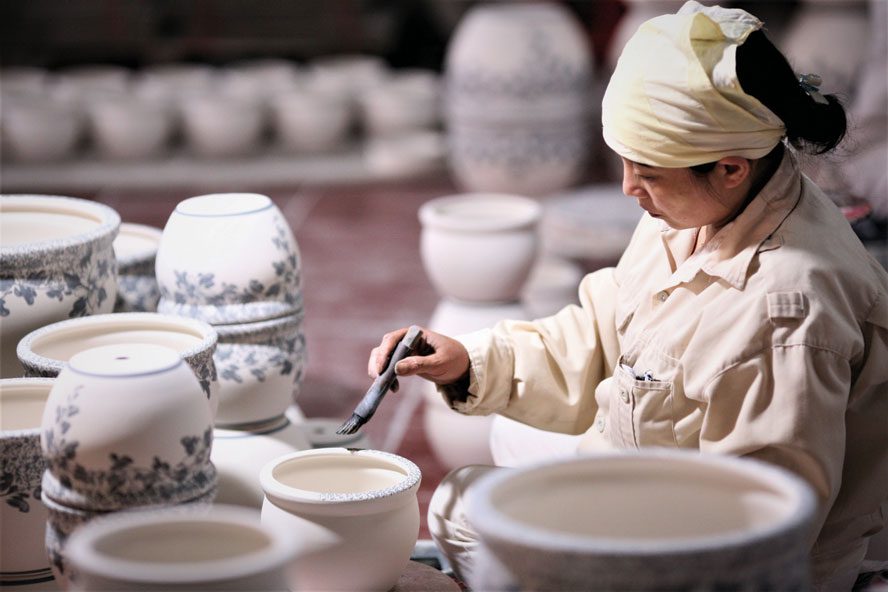
The techniques used in Vietnamese pottery are as varied as the pieces themselves. Artisans typically begin with high-quality clay sourced from local riverbanks, which is then refined and shaped by hand or using traditional potter’s wheels. This process requires immense skill and patience, as the potters must ensure that each piece is perfectly balanced and smooth.
Once shaped, the pottery is dried and then fired in kilns, which can reach incredibly high temperatures. This firing process not only hardens the clay but also allows for the vibrant glazes to take on their rich colors. Many potters in Bat Trang still use traditional wood-fired kilns, a method that adds unique character to each piece of Vietnamese pottery, often resulting in subtle variations in color and texture.
Discovering the cultural connection within Vietnamese pottery

Vietnamese pottery is not just about creating beautiful objects; it is also a means of preserving cultural identity. The motifs and designs used in pottery often draw inspiration from nature, local folklore, and historical events, serving as a canvas for storytelling. For instance, you may find images of lotus flowers, bamboo, and dragons, each symbolizing different aspects of Vietnamese culture.
In many households, pottery is an integral part of daily life, used for everything from serving meals to decorative displays. The act of making pottery is often a communal endeavor, with families coming together to create, share, and celebrate their craft. This sense of community fosters a deep connection to tradition, ensuring that the art of Vietnamese pottery continues to thrive.
How modern adaptations are shaping the future of Vietnamese pottery
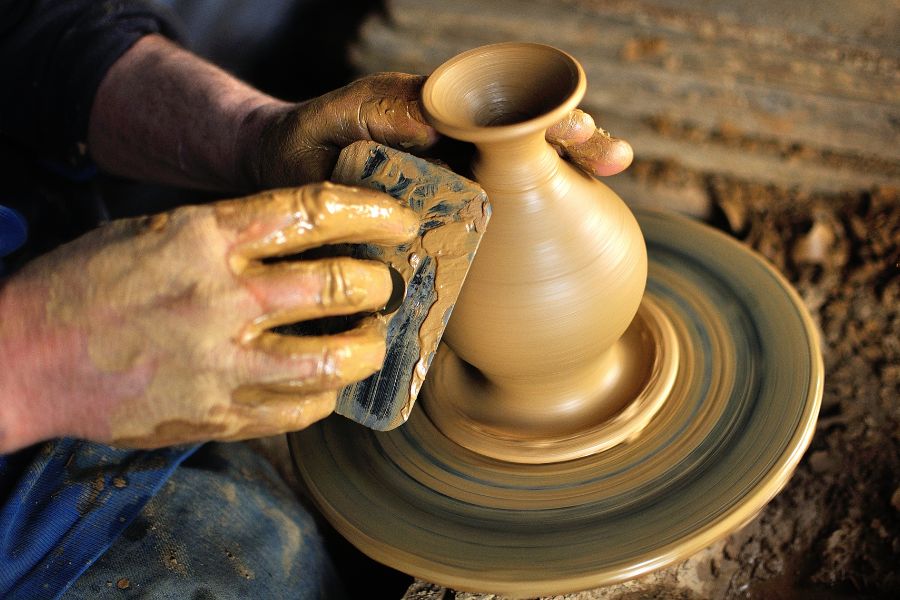
While the roots of Vietnamese pottery remain firmly planted in tradition, contemporary artisans are also embracing modern techniques and designs. Many potters are experimenting with new styles, incorporating innovative glazes and forms that appeal to today’s consumers. This blend of old and new keeps the craft relevant, allowing it to flourish in a rapidly changing world.
Visitors to Bat Trang and other pottery villages can immerse themselves in this vibrant culture, participating in workshops and witnessing the artistry firsthand. As you shape your own piece of pottery, you become part of a centuries-old tradition, connecting with the spirit of the artisans who have shaped Vietnamese pottery for generations.
Why the legacy of Vietnamese pottery endures
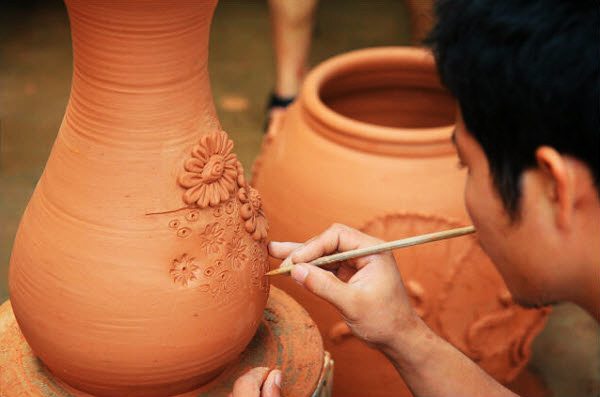
The art of Vietnamese pottery is a testament to the country’s rich cultural heritage and the enduring spirit of its people. Through the skillful hands of artisans, clay is transformed into beautiful, functional art that tells stories of history, tradition, and community. As this craft continues to evolve, it remains a cherished part of Vietnamese life, inviting future generations to celebrate and preserve its legacy.
Conclusion
From the historic kilns of Bat Trang to the modern studios of today’s artisans, Vietnamese pottery is more than just an art form—it’s a living narrative of the nation’s soul. It masterfully blends centuries-old techniques with contemporary creativity, resulting in pieces that are both timeless and relevant.
Whether you’re an avid collector or a curious traveler, the intricate designs and rich history of these ceramics offer a profound connection to Vietnam’s cultural heart. The legacy of Vietnamese pottery is not just preserved in museums; it is actively shaped and celebrated every day, promising a vibrant future for this cherished craft.
For more travel inspiration and to connect with fellow adventurers, join our community on the ExoTrails Vietnam Facebook group and follow the ExoTrails Fanpage!
FAQs
What is Vietnamese pottery famous for?
Vietnamese pottery is famous for its rich history, intricate hand-painted designs like the classic blue-and-white patterns, and its deep cultural significance. It is renowned for being handcrafted in traditional villages like Bat Trang.
Why is Bat Trang village famous?
Bat Trang is famous for being one of Vietnam’s oldest and most respected pottery centers, with a craft history spanning over 700 years. It is synonymous with high-quality, authentic ceramics.
How is traditional pottery made in Vietnam?
Traditional pottery is made using high-quality local clay, which is shaped by hand or on a potter’s wheel. The pieces are then dried, glazed, and fired in traditional wood-fired kilns at extremely high temperatures.
What is the history of Bat Trang ceramics?
Bat Trang ceramics have a history of over 700 years, establishing the village as a primary hub for pottery production near Hanoi. Its unique craft and techniques have been passed down through generations of artisan families.
Can you visit Bat Trang from Hanoi?
Yes, Bat Trang village is located just outside of Hanoi and is easily accessible for a day trip. Visitors can explore workshops, shop for ceramics, and even try making pottery themselves.

